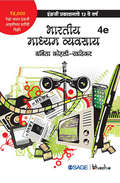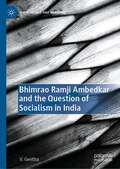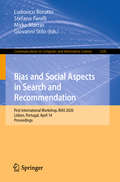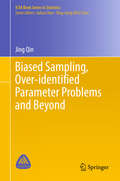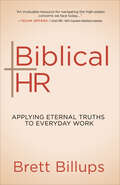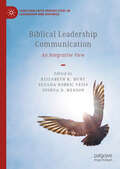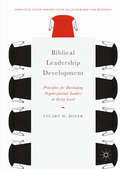- Table View
- List View
Bharti Airtel in Africa
by Krishna G. Palepu Tanya BijlaniIn June 2010, Bharti Airtel, India's largest mobile services operator, acquired the African assets of Bahrain-based Zain Telecom for $10.7 billion-the largest ever cross-border deal in emerging markets. Bharti's executives envisioned that they would replicate the highly successful high-volume, low-cost telecom model that they had pioneered for the Indian masses in Africa. But when they began to integrate the companies, Bharti's executives discovered a slew of unexpected challenges, including cultural differences between their Indian and African employees, poorer infrastructure than they had expected with higher-than-anticipated costs, a monopolistic distribution network, strong competitors, a weak partner ecosystem, and a market that was unresponsive to tariff cuts. In early 2012, a year and a half later, the company has outsourced its networks, IT and customer service operations like it did in India; launched a unified brand across the continent; and culturally integrated with its new environment. Key business metrics, including profit margins and market share, are showing early signs of improvement. But questions remain about whether the company will be able to overtake MTN, Africa's leading player, by lowering tariffs like it did in India, and what its strategy should be going forward.
Bharti Infratel: Unlocking Value in Mobile Infrastructure
by Rachna Tahilyani Tanya Bijlani Ramon Casadesus-Masanell Prashant SalwanBharti Infratel, a telecom tower company provides shared telecom infrastructure to mobile operators in India. It is a spin off from Bharti Airtel, India's largest leading mobile services operator. Bharti Infratel partnered with its rivals, Vodafone and Idea Cellular, to form a joint venture, Indus Towers, to pool and share the three companies' tower assets. The managing director of Bharti Infratel's parent group, Bharti Enterprises must decide if he should merge Bharti Infratel with Indus Towers.
Bharti Tele-Ventures
by Tarun Khanna Krishna G. Palepu Ingrid VargasFollowing the liberalization of India's telecommunications service industry in the early 1990s, Bharti Tele-Ventures grew from a small entrepreneurial telephone equipment importer and manufacturer to become India's largest private-sector telecommunications service group in terms of numbers of customers. Attracting over $1.2 billion in foreign equity investments, more than any other Indian telecom firm, by 2001 Bharti had achieved the country's leading market position in mobile telecom service. By 2003, however, the nature of the game had changed. A spate of mergers and acquisitions had reduced the field to the most successful and best-financed contenders. At the same time, telecommunications regulatory changes let in new, lower priced competitors, significantly altering the rules of the game. Suddenly, in addition to government-owned BSNL and the stately Tata Group, India's oldest business house, Bharti was up against Reliance, the largest and most profitable of a new generation of business groups. Bharti's management and equity partners at Mittal and his partners at SingTel and Warburg Pincus had to determine what to do next.
Bhartiya Arthashastra ani Vyavsay Model FYB.COM New NEP Syllabus - RTMNU: भारतीय अर्थशास्त्र आणि व्यवसाय मॉडेल एफ.वाय.बी.कॉम. नवीन एन.इ.पी. अभ्यासक्रम - राष्ट्रसंत तुकडोजी महाराज नागपूर विद्यापीठ
by Dr Milind Gulhane Dr Prabhakar Motghare Dr Nabha Kamble‘भारतीय अर्थशास्त्र आणि व्यवसाय मॉडेल’ हे पुस्तक बी.कॉम. अभ्यासक्रमासाठी तयार करण्यात आलेले आहे. हे पुस्तक भारतीय आर्थिक विचारांचा इतिहास, कौटिल्याचा अर्थशास्त्र, प्राचीन भारतातील शेती, व्यापार, शासन, शिक्षण, संपत्ती, तसेच प्राचीन व मध्ययुगीन भारतातील आर्थिक धोरणांचा सखोल अभ्यास करते. यामध्ये वसाहतपूर्व भारतातील आर्थिक योगदान, स्वातंत्र्यानंतरचे नियोजन, हरित क्रांती, उदारीकरण व डिजिटल युगातील नव्या धोरणांचा ऊहापोह आहे. या पुस्तकात भारतीय व्यवसाय मॉडेल, कौशल्य विकास, पायाभूत सुविधा, आणि शाश्वत विकासासारख्या आधुनिक संकल्पनांचा समावेश केला आहे. ‘मेक इन इंडिया’, ‘डिजिटल इंडिया’, आणि ‘स्टार्टअप इंडिया’ यासारख्या उपक्रमांद्वारे भारताचा आर्थिक विकास कसा घडतो आहे हे स्पष्ट करण्यात आले आहे. प्राचीन धर्मशास्त्रीय तत्त्वज्ञानाचे आणि शुक्रनीतीसारख्या ग्रंथांचे आधुनिक आर्थिक विचारांवर होणारे परिणाम देखील समजावण्यात आले आहेत. हे पुस्तक विद्यार्थ्यांसाठी ज्ञानवृद्धीक व भारताच्या आर्थिक धोरणांची सखोल समज प्राप्त करण्यासाठी उपयुक्त आहे.
Bhartiya Arthavyavstha Paper-3 ani Paper-4 Second Semester FYBA New NEP Syllabus - SPPU: भारतीय अर्थव्यवस्था पेपर-३ आणि पेपर-४ दुसरे सत्र एफ.वाय.बी.ए. नवीन एन.इ.पी. अभ्यासक्रम - सावित्रीबाई फुले पुणे यूनिवर्सिटी
by Dr Sunil Ugale Dr Amol Gaikwad Dr Manisha Aher Dr Savita Sawant"भारतीय अर्थव्यवस्था - पेपर-3 आणि पेपर-4" हे पुस्तक सावित्रीबाई फुले पुणे विद्यापीठाच्या NEP-2020 अभ्यासक्रमानुसार रचले गेले आहे. यामध्ये भारतातील आर्थिक नियोजन, महाराष्ट्राची अर्थव्यवस्था, दारिद्र्य, विषमता, बेरोजगारी आणि आर्थिक विकासाचे विविध पैलू सविस्तरपणे मांडले आहेत. नियोजनाची उद्दिष्टे, नीती आयोगाची भूमिका, तसेच पंचवार्षिक योजनांचे यश-अपयश यांचा अभ्यास पुस्तकात समाविष्ट आहे. महाराष्ट्राच्या अर्थव्यवस्थेतील सहकारी चळवळ, प्रादेशिक असंतुलन, पाणी व्यवस्थापन, आणि रोजगार निर्मितीवरील चर्चाही विस्तृतपणे आहे. पुस्तकात आर्थिक असमानता, सामाजिक न्याय, आणि शाश्वत विकास यासंदर्भातील उपाय सुचवण्यात आले आहेत. आर्थिक धोरणांचे परिणाम, क्षेत्रीय विकास, आणि ग्रामीण-शहरी समस्या या घटकांवरही भर देण्यात आला आहे. पुस्तकाची भाषा सोपी व मुद्देसूद असून विद्यार्थ्यांना भारताच्या आर्थिक यंत्रणेचा सखोल अभ्यास करण्यासाठी हे उपयुक्त ठरते. यामध्ये सैद्धांतिक तसेच प्रात्यक्षिक भागांचा अंतर्भाव असून, विद्यार्थी आणि संशोधकांसाठी एक उत्कृष्ट मार्गदर्शक आहे.
Bhartiya Arthik Dhoran-1 First Semester FYBA New NEP Syllabus - SPPU: भारतीय आर्थिक धोरण-१ प्रथम सत्र एफ.वाय.बी.ए. नवीन एन.इ.पी. अभ्यासक्रम - सावित्रीबाई फुले पुणे यूनिवर्सिटी
by Dr Sunil Ugale Dr Amol Gaikwad Dr Manisha Aher Dr Deepak Kareसावित्रीबाई फुले पुणे विद्यापीठाच्या (SPPU) नवीन राष्ट्रीय शैक्षणिक धोरण (NEP) 2020 अंतर्गत प्रथम वर्ष बी.ए. (FYBA) अभ्यासक्रमात भारतीय आर्थिक धोरणाचा समावेश करण्यात आला आहे. या अभ्यासक्रमाचा उद्देश विद्यार्थ्यांना भारतीय अर्थव्यवस्थेचा मूलभूत अभ्यास, त्यातील तत्त्वे, संरचना, व कार्यप्रणाली समजून घेण्यासाठी प्रोत्साहन देणे आहे. आर्थिक धोरणाच्या माध्यमातून भारतातील अर्थव्यवस्थेची संघराज्यीय रचना, आर्थिक हक्क, व धोरणात्मक दृष्टिकोन यांची विस्तृत माहिती देण्यात येते. विद्यार्थ्यांना अर्थव्यवस्थेची ऐतिहासिक पार्श्वभूमी, आर्थिक सुधारणा, व त्याचे भारताच्या सामाजिक-आर्थिक व राजकीय विकासामधील महत्त्व समजते. हा अभ्यासक्रम केवळ शैक्षणिक ज्ञान देण्यावर मर्यादित नसून, विद्यार्थ्यांमध्ये आर्थिक मूल्यांचा आदर, आर्थिक समता, व विकासात्मक संकल्पना रुजविण्याचा उद्देश आहे. अभ्यासक्रमामध्ये राष्ट्रीय विकास, आर्थिक सुधारणा, व आर्थिक समतेसारख्या मुद्द्यांवर विशेष भर दिला जातो. भारतीय आर्थिक धोरणाचे महत्त्व केवळ शैक्षणिक नाही, तर जागरूक नागरिक आणि आर्थिक दृष्टिकोनाने सशक्त देश घडविण्यासाठी आवश्यक आहे. NEP 2020 अंतर्गत हा अभ्यासक्रम विद्यार्थ्यांना राष्ट्रीय आणि जागतिक स्तरावर सक्षम नागरिक बनविण्यासाठी उपयुक्त ठरेल.
Bhartiya Arthik Dhoran-2 Second Semester FYBA New NEP Syllabus - SPPU: भारतीय आर्थिक धोरण-२ दुसरे सत्र एफ.वाय.बी.ए. नवीन एन.इ.पी. अभ्यासक्रम - सावित्रीबाई फुले पुणे यूनिवर्सिटी
by Dr Sunil Ugale Dr Amol Gaikwad Dr Manisha Aher Dr Deepak Kare"भारतीय आर्थिक धोरण-2" या दस्तऐवजामध्ये भारताच्या लोकसंख्या, रोजगार, आर्थिक धोरणे आणि दारिद्र्य यासंबंधीचे मुद्दे उलगडले आहेत. शैक्षणिक उद्दिष्टांसाठी हा दस्तऐवज तयार करण्यात आला असून तो NEP अभ्यासक्रमावर आधारित आहे. त्यात लोकसंख्या वाढ, तिचा आर्थिक विकासावर होणारा प्रभाव, लोकसंख्या नियंत्रण धोरणे, दारिद्र्याची कारणे, उपाययोजना यांचा सखोल आढावा घेतला आहे. व्यावसायिक विभाजन, ग्रामीण-शहरी वितरण, वयोमानानुसार लोकसंख्येचे स्वरूप आणि मानवी भांडवलनिर्मितीवर देखील भर दिला आहे. दस्तऐवजातून भारताच्या प्रगतीसाठी आवश्यक धोरणांचा, लोकसंख्येचा दृष्टीने आर्थिक लाभ आणि आव्हाने यांचा विचार मांडण्यात आला आहे. दस्तऐवजातील मुद्दे विद्यार्थ्यांना भारतातील आर्थिक परिप्रेक्ष्य समजून घेण्यास मदत करतात.
Bhartiya Madhyam Vyavsaye
by Vanita Kohli-KhandekarThe Indian Media Business, Fourth Edition gives you detailed analysis, perspective and information on eight segments of the media business in India—print, TV, film, radio, music, digital, outdoor, and events. It presents the business history, current dynamics, regulation, economics, technology, valuations, case studies, trends (Indian and global) and a clear sense of how the business operates. This book is a must-read for media professionals, students and for those planning to invest in the Indian media and entertainment business. The outstanding feature of the fourth edition is a new chapter on digital media—arguably, the first ever look at digital media from a comprehensive business perspective. This looks at everything from history to business dynamics and the major issues digital media faces in India. This edition tackles regulation with more detail than any of the previous ones. There is one large case study on the quality of regulation in India and several caselets such as the ones on copyright law, defamation law and how it works for social media. This edition also contains more caselets than the previous editions. There are caselets on the changes in readership methodology, on the trouble with news broadcasting and on the rising power of Hindi newspapers and the impact of digital on both print and TV among others.
Bhimrao Ramji Ambedkar and the Question of Socialism in India (Marx, Engels, and Marxisms)
by V. GeethaThis book offers a reading of Bhimrao Ambedkar’s engagement with the idea and practice of socialism in India by linking it to his lifelong political and philosophical concerns: the annihilation of the caste system, untouchability and the moral and philosophical systems that justify either. Rather than view his ideas through a socialist lens, the author suggests that it is important to measure the validity of socialist thought and practice in the Indian context, through his critique of the social totality. The book argues its case by presenting a broad and connected overview of his thought world and the global and local influences that shaped it. The themes that are taken up for discussion include: his understanding of the colonial rule and the colonial state; history and progress; nationalism and the questions he posed the socialists; his radical critique of the caste system and Brahmancal philosophies, and his unusual interpretation of Buddhism.
Bhutan: Governing for Happiness
by Sophus A Reinert Thomas Humphrey Benjamin SafranUnique among the world's countries, the Himalayan Kingdom of Bhutan had abandoned the traditional policy goal of increasing Gross Domestic Product (GDP) in favor of pursuing Gross National Happiness (GNH). Famously, Bhutan ranked highly on lists of the happiest countries in spite of a tumultuous history, a low life expectancy, a dismal literacy rate, a small and undiversified economy, and low GDP per capita. Everyone, it seemed, from tourists and Hollywood screenwriters to leading development economists, looked to Bhutan for enlightenment and perspective on crises both personal and global. GNH had become the country's brand and suggested a possible future for capitalism. Was Bhutan on to something? Was there really a tradeoff between growth and happiness, and, if so, was it acceptable? In early 2014, Bhutan's newly minted Prime Minister Tshering Tobgay was faced with these questions as he deliberated on whether to approve a massive new Bhutanese-Indian hydropower collaboration that experts argued would provide energy, foreign exchange, and invaluable jobs, but which also risked undermining the country's brand as well as its happiness.
Bhutan: Governing for Happiness
by Thomas Humphrey Benjamin Safran Sophus A. ReinertUnique among the world's countries, the Himalayan Kingdom of Bhutan had abandoned the traditional policy goal of increasing Gross Domestic Product (GDP) in favor of pursuing Gross National Happiness (GNH). Famously, Bhutan ranked highly on lists of the happiest countries in spite of a tumultuous history, a low life expectancy, a dismal literacy rate, a small and undiversified economy, and low GDP per capita. Everyone, it seemed, from tourists and Hollywood screenwriters to leading development economists, looked to Bhutan for enlightenment and perspective on crises both personal and global. GNH had become the country's brand and suggested a possible future for capitalism. Was Bhutan on to something? Was there really a tradeoff between growth and happiness, and, if so, was it acceptable? In early 2014, Bhutan's newly minted Prime Minister Tshering Tobgay was faced with these questions as he deliberated on whether to approve a massive new Bhutanese-Indian hydropower collaboration that experts argued would provide energy, foreign exchange, and invaluable jobs, but which also risked undermining the country's brand as well as its happiness.
Bhutan: Statistical Appendix
by International Monetary FundA report from the International Monetary Fund.
Bi-Rite Market's Eat Good Food: A Grocer's Guide to Shopping, Cooking & Creating Community Through Food [A Cookbook]
by Sam Mogannam Dabney GoughA cookbook and market guide from the nation's premier neighborhood grocery store, featuring expert advice on how to identify the top ingredients in any supermarket and 90 vibrant recipes that make optimal use of the goods. San Francisco's Bi-Rite Market has a following akin to a hot restaurant--its grocery goods and prepared foods have made it a destination for lovers of great food. In Eat Good Food, former chef turned market owner Sam Mogannam explains how to source and use the finest farm-fresh ingredients and artisanal food products, decipher labels and terms, and build a great pantry. More engaging than a field guide and more informative than a standard cookbook, and with primers on cooking techniques and anecdotes that will entertain, enlighten, and inspire, Eat Good Food will revolutionize the way home cooks shop and eat.
BiC Pen Corp. (A)
by C. Roland Christensen Elizabeth L. RachalProvides strategic analysis and recommendations.
Bias and Noise: Information Accessibility in China and India
by Tarun Khanna Lynda M. ApplegateConsidering China's and India's starkly opposing attitudes toward disseminating and accessing information, how can the two countries communicate? This chapter addresses this issue along with the question of how Western countries might also access and interpret information in China and India.
Bias and Social Aspects in Search and Recommendation: First International Workshop, BIAS 2020, Lisbon, Portugal, April 14, Proceedings (Communications in Computer and Information Science #1245)
by Ludovico Boratto Stefano Faralli Mirko Marras Giovanni StiloThis book constitutes refereed proceedings of the First International Workshop on Algorithmic Bias in Search and Recommendation, BIAS 2020, held in April, 2020. Due to the COVID-19 pandemic BIAS 2020 was held virtually. The 10 full papers and 7 short papers were carefully reviewed and seleced from 44 submissions. The papers cover topics that go from search and recommendation in online dating, education, and social media, over the impact ofgender bias in word embeddings, to tools that allow to explore bias and fairnesson the Web.
Bias in the Workplace and Society
by Douglas G. LongBias in the Workplace and Society looks at the causes and management of the biases that underpin all behavior inclusive of discrimination, prejudice, and stereotyping that can occur in the workplace and in everyday contexts. It considers how such biases are developed in relation to societal and global issues and explores the manifestations of bias that are illustrated across a variety of situations. The book is based on the premise that everyone is biased and there is no such thing as an unbiased person. We cannot eliminate bias, but we can manage it.Grounded in the latest research, the book focuses on the impact of biases as they are manifested in everyday life. The first three chapters look at the reality of bias, how it develops, and how it is then reinforced by four forces – politics, business, religion, and social media. From this point it moves to explore the impact of bias across ten different areas, and, for each, it encourages discussion and debate as to the reality of impact. It asks the reader to consider the possibility that they are personally impacted by unconscious and conscious biases.The final two chapters then draw everything together, challenging the reader to realistically assess the reality of both unconscious and conscious biases in their life before moving to provide guidelines as to how biases can be managed. The point is made that behavioural change as a result of this self-examination is optional – it is a personal decision.This book is suitable for all persons concerned about the impact of bias and, particularly, students of management, leadership, HRM, diversity and decision making.
Biased Sampling, Over-identified Parameter Problems and Beyond
by Jing QinThis book is devoted to biased sampling problems (also called choice-based sampling in Econometrics parlance) and over-identified parameter estimation problems. Biased sampling problems appear in many areas of research, including Medicine, Epidemiology and Public Health, the Social Sciences and Economics. The book addresses a range of important topics, including case and control studies, causal inference, missing data problems, meta-analysis, renewal process and length biased sampling problems, capture and recapture problems, case cohort studies, exponential tilting genetic mixture models etc.The goal of this book is to make it easier for Ph. D students and new researchers to get started in this research area. It will be of interest to all those who work in the health, biological, social and physical sciences, as well as those who are interested in survey methodology and other areas of statistical science, among others.
Biblical Cross-Cultural Leadership: Principles from the New Testament (Christian Faith Perspectives in Leadership and Business)
by Joshua D. Henson Suzana Dobrić Veiss Elizabeth K. HuntThis volume centers on leadership through the lenses of cross-cultural dynamics and Biblical principles. Each chapter examines a distinct instance from a New Testament text, offering diverse Biblical applications. The text places an emphasis on understanding cultural awareness and cultural sensitivity, offering insights on integrating Biblical values into leadership approaches. Addressing a void in demonstrating the alignment of cross-cultural leadership with Biblical principles, this work makes a valuable contribution to the realms of cross-cultural studies and organizational leadership.
Biblical HR: Applying Eternal Truths to Everyday Work
by Brett BillupsA unique, practical step-by-step guide to deal with specific, employee workplace issues from a biblical perspective.
Biblical Leadership Communication: An Integrative View (Christian Faith Perspectives in Leadership and Business)
by Joshua D. Henson Elizabeth K. Hunt Suzana Dobric VeissThis book focuses on leadership communication from a biblical perspective. Taking examples from the Bible, the text uses Biblical exegesis to integrate theoretical ideas in leadership and communication. Each chapter focuses on a different type of leadership communication. The authors examine topics related to change management, power, conflict and adjudication, intrapersonal communication, crisis communication, and motivating language. Overall, this work informs scholarly conversations around communicating within organizations from a Biblical perspective and provides a strong academic foundation for future research connecting Biblical exegesis, leadership, and communication.
Biblical Leadership Development: Principles for Developing Organizational Leaders at Every Level (Christian Faith Perspectives in Leadership and Business)
by Stuart W. BoyerThis book examines the principles and procedures implemented by Moses for developing leaders. Using Exodus 18 as the basis, the author explores how leadership skills are best developed in small group settings. The author then delves into contemporary leadership principles, such as authentic leadership, and how organizations can develop leaders at every level of the organization. Issues such as accountability, ethics, and trust will be discussed at length, with an examination of the expected outcomes of training leaders at all levels. This book will be a valuable addition to the leadership literature in showing how biblical leadership principles can be used in contemporary organizations.
Biblical Organizational Leadership: Principles from the Life of Jesus in the Gospel of John (Christian Faith Perspectives in Leadership and Business)
by Joshua D. HensonThis edited work uses the life and biblical teachings of Jesus to examine modern leadership theory. With the Gospel of John as its focal point, it depicts leadership traits such as compassion, empathy, humility, and transparency as essential to the ministry of Jesus. The authors explore concepts related to communication, conflict resolution, mentorship, authentic leadership, servant leadership, transformational leadership, and succession planning to show the applicability of principles espoused in biblical teachings to modern organizations. This book will make a valuable addition to the leadership literature by using the life of Jesus as a case study.

